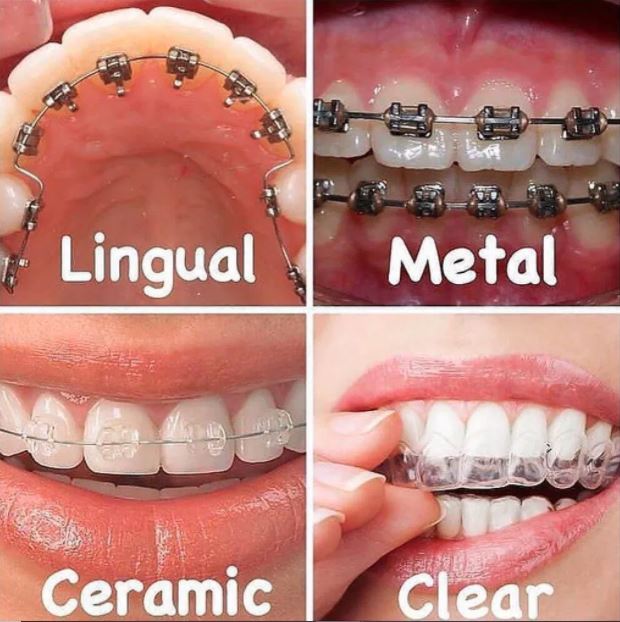Comprehensive Overview to Orthodontics Treatments for Fixing Oral Imbalances
Recognizing the details of each treatment, including their devices, advantages, and possible downsides, is essential in making notified choices about one's orthodontic therapy. As we navigate with the comprehensive overview to orthodontic treatments for remedying dental imbalances, the detailed information of each technique will unravel, dropping light on the course toward a useful and unified oral placement.
Orthodontic Procedures Introduction

In addition to clear aligners and conventional braces, orthodontists may likewise suggest other interventions like headgear, palatal expanders, or retainers to attend to specific placement issues (cumming orthodontist). These procedures are tailored to every patient's distinct needs and may involve a mix of treatments to achieve the wanted outcomes. Regular modifications and tracking are crucial parts of orthodontic treatment to make certain progress gets on track and to make any type of required alterations along the means. By going through orthodontic treatments, individuals can not just attain a straighter grin but likewise boost their overall oral health and function.
Conventional Dental Braces: How They Function
When thinking about orthodontic treatments for oral imbalances, typical braces stand out as a tried and true approach for correcting teeth placing. Traditional braces consist of braces, wires, and bands that collaborate to apply continuous pressure on the teeth, gradually relocating them into the preferred placement. The braces are connected to the teeth making use of a special adhesive, and the cords are threaded via the braces. By adjusting the stress of the wires, orthodontists can regulate the instructions and force related to each tooth, directing them into proper positioning over time.
As pressure is applied to the teeth via the braces, the bone bordering the teeth is reshaped to sustain the brand-new tooth settings. Clients will certainly need regular adjustments at the orthodontist's workplace to make certain the dental braces continue to apply the correct pressure for reliable teeth activity.
Undetectable Aligners: Advantages And Disadvantages
These clear, personalized trays are basically invisible when used, making them an appealing choice for people looking for a much more aesthetically pleasing orthodontic treatment. Patients can remove the aligners prior to eating or cleaning their teeth, lowering the threat of food obtaining stuck in the device and simplifying the cleaning procedure.

Surgical Orthodontic Options
Surgical treatments in orthodontics present feasible choices for addressing complex oral imbalances that might not be properly fixed through standard orthodontic treatments. While standard dental braces and unseen aligners can deal with several orthodontic issues, specific cases require medical treatment to attain ideal results. Surgical orthodontic alternatives are typically suggested for extreme malocclusions, significant jaw discrepancies, and cases where the underlying bone structure requires modification to achieve appropriate alignment.
One common medical orthodontic procedure is orthognathic surgical treatment, which includes rearranging the jaws to fix functional issues such as trouble chewing or speaking. This surgery is typically done in cooperation with an orthodontist that helps straighten the teeth before and after the treatment. Surgical orthodontics might also entail treatments to expose influenced teeth, eliminate excess periodontal tissue, or improve the jawbone to produce a more unified facial account.
Prior to taking into consideration surgical orthodontic options, clients undertake a comprehensive examination to establish the requirement and possible advantages of such treatments. aligners. While surgical treatment may appear daunting, it can significantly boost both the feature and aesthetic appeals of the smile in situations where official statement conventional orthodontic treatments drop short
Retainers and Post-Treatment Treatment

Post-treatment treatment entails adhering to the orthodontist's directions vigilantly. This may include appropriate dental hygiene techniques, going to follow-up visits, and using the retainers as suggested. Failure to abide with post-treatment treatment guidelines can lead to relapse, where the teeth progressively return towards their initial placements. Regular retainer wear, good dental health, and routine dental examinations are necessary for preserving the results achieved through orthodontic surgery and guaranteeing the long-term security of the dealt with oral positioning.
Final Thought
To conclude, orthodontic procedures provide different alternatives for remedying dental misalignments. Conventional dental braces utilize steel brackets and cables to move teeth right into appropriate placement. Unseen aligners supply a more very discreet choice however might not appropriate for all instances. Surgical orthodontic alternatives are readily available for much more extreme imbalances. Retainers are generally made use of post-treatment to maintain the new placement. Generally, orthodontic procedures individual dental insurance can efficiently improve oral health and wellness and aesthetic appearance.
As we navigate via the extensive guide to orthodontic treatments for dealing with oral imbalances, the elaborate details of each approach will unravel, shedding light on the path toward a useful and unified oral positioning. - cumming braces
One of the most typical orthodontic therapies is the use of dental braces, which are composed of steel brackets and cords that apply gentle stress to slowly move teeth into the preferred position.When thinking about orthodontic therapies for dental imbalances, conventional dental braces stand out as a reliable approach for remedying teeth placing. In addition, undetectable aligners might not be ideal for complicated orthodontic concerns that need more considerable teeth movement, as they are typically advised for mild to modest instances. Retainers are tailor-made orthodontic gadgets made to hold teeth in their corrected placements after the conclusion of orthodontic treatment.